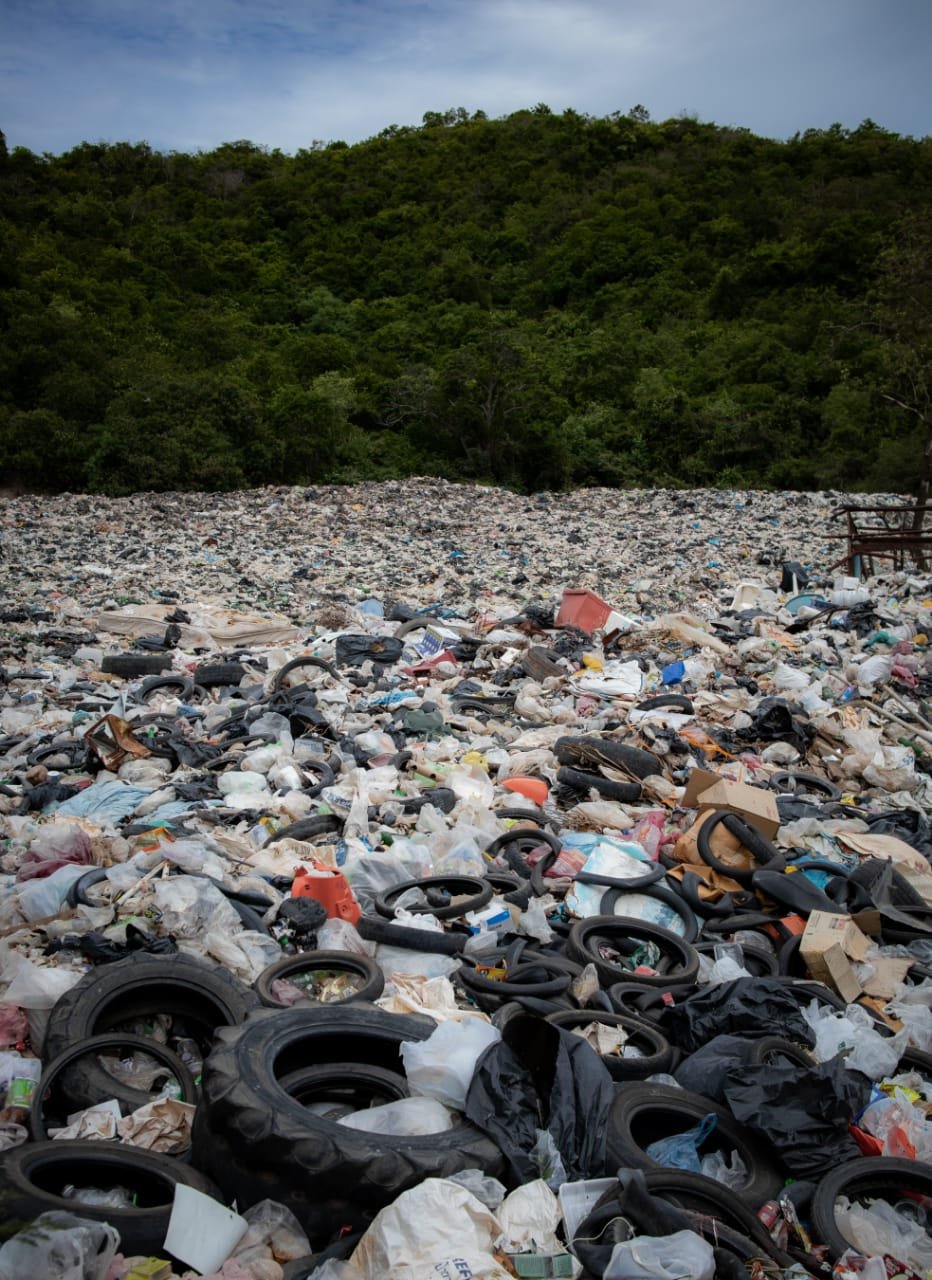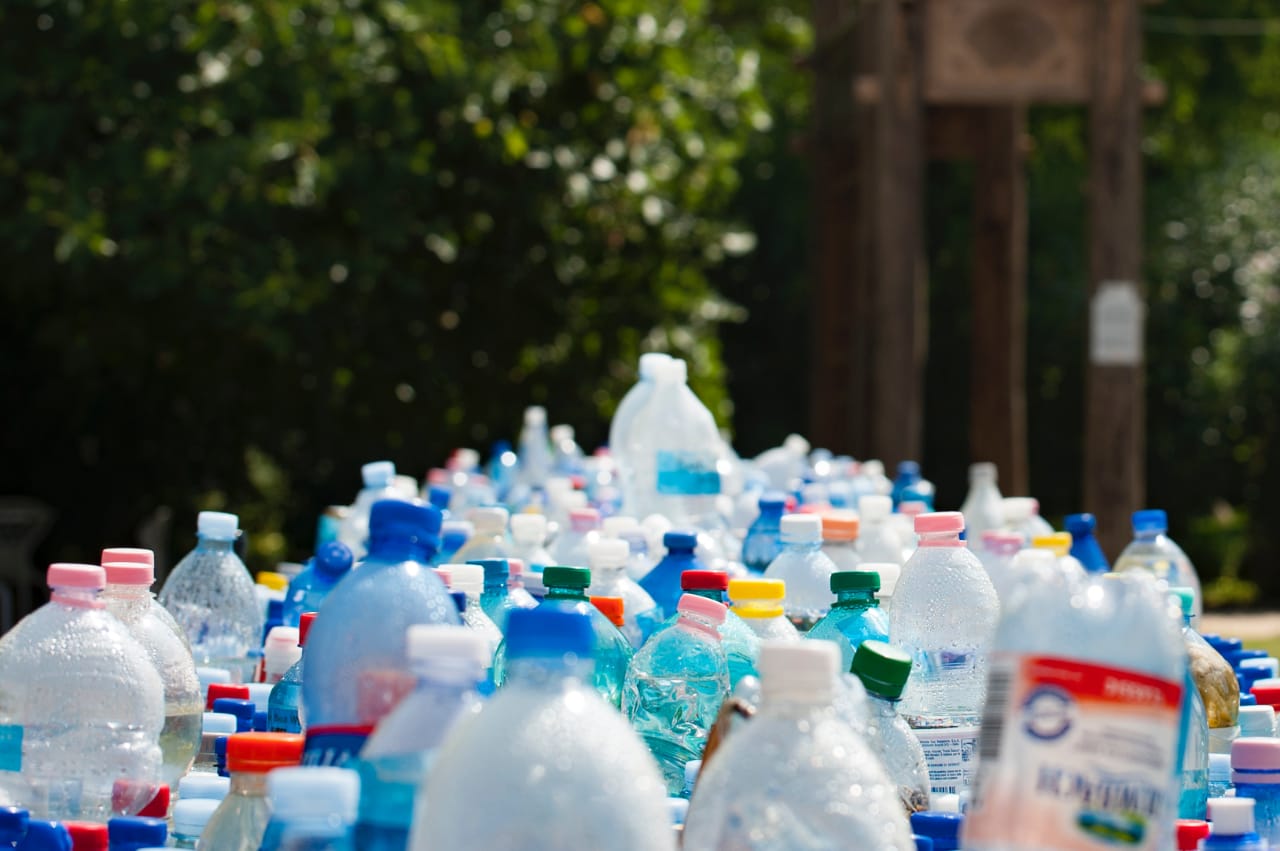Circular economy may be a highly popular topic in Indonesia and in developed countries, but supporters of the idea may have realized that the transition towards it is a bumpy road due to lack of public education, the sector being challenging to finance, and the lack of incentives from policymakers. Indonesia’s Coordinating Minister for the Economy Airlangga Hartarto spoke about the urgency for Indonesia to implement a circular economy in a seminar titled “Blue, Green, and Circular Economy: The Future Platform for Post-Pandemic Development”, which was part of the second G20 Sherpa meeting in Labuan Bajo, East Nusa Tenggara, in July 2022. “Environmental issues from carbon pollution, sea, and land degradation, to plastic waste problems”, are affirming the urgency for Indonesia to implement a more sustainable economic approach, he said, adding “Blue, Green, and Circular Economy' have great potential as well as benefits to help spur global sustainable economic development.” A panelist at the discussion, however, reminded me that there are many challenges to implementing a circular economy in Indonesia. Yose Rizal Damuri, the executive director for CSIS and Co-Chair of T20 Indonesia, mentioned three challenges to implementing a circular economy in Indonesia. They lack understanding from the public, lack financial support, and lack incentives.
The circular approach in Indonesia
What is actually a circular economy? How has the government of Indonesia adopted the Circular Economy concepts into its vision and development strategies? Suharso Monoarfa, Minister of National Planning and Development Indonesia/Bappenas has mentioned how Indonesia would adopt this concept into its vision and mission. “Circular economy is a closed loop economy system approach in which raw materials, components, and products are maintained as useful and valuable as possible so as to reduce the amount of waste material that is not reused and disposed of to landfills,” he said in his foreword in a report jointly produced by Bappenas, the Embassy of Denmark in Jakarta and the United Nations Development Program (UNDP), released in January 2021.
“The Circular Economy encourages higher green economic growth compared to the business as usual (BAU) scenario by designing systems and products that require fewer resources, ensuring that the extracted raw materials are used as efficiently and maximizing its lifespan,” Minister Suharso said in the same report. He continued that the government of Indonesia sees that the circular economy is one of the instruments that can support the achievements of the Sustainable Development Goals and it is also one of the drivers for Indonesia toward economic transformation, especially with regard to the green economy and low-carbon development strategies.
Five sector's potentials for circular economy
Minister Suharso said Indonesia has adopted the Circular Economy concepts as the policy going forward and will be part of the government’s vision and development strategies. The concept, he said, is included in Vision Indonesia 2045, which refers to some targets Indonesia to achieve when the country celebrates its 100 years of independence.
Five industrial sectors in Indonesia – namely food & beverage, textiles, construction, wholesale and retail trade (with a focus on plastic packaging), and electrical and electronic equipment. – have been identified to have the potential to implement a circular economy and an analysis of the environmental, economic, and social potential for the implementation of a circular economy was discussed in the report. “A circular economy is more than just an opportunity for Indonesia to reduce waste and improve the environment. Like governments around the world, Indonesian policymakers are seeking to support the economic recovery from the COVID-19 pandemic,” said the Executive Summary of the joint report titled “Summary for Policymakers: The Economic, Social, and Environmental Benefits of a Circular Economy in Indonesia.” “However, a key question remains as to whether these recovery policies reinforce the existing “business-as-usual” economic structures with their associated negative impacts on the environment, or whether there is an opportunity to “build back better” where efforts are placed to maximize the shared benefits between the economy and the environment,” the report added.
The joint report said Indonesia’s GDP could increase by $42 billion to $45 billion in 2030 if the country can fully adopt a circular economy and reap the opportunities from the five sectors of the economy mentioned above to help strengthen the economy, create new jobs, lower household costs, and preserve the environment. The success of boosting that amount of GDP figure would depend on whether Indonesia could adopt the circularities in those sectors, compared to it would under a “business as usual approach. The report also said; 4.4 million cumulative net jobs could be created economy-wide between 2021 and 2030, out of which 75 percent could be for women; CO2e emissions and water use could be reduced by 126 million tonnes and 6.3 billion cubic meters (m3) in 2030, respectively (equivalent to 9 percent of the current emissions and 3 percent of the current water usage).
Furthermore, the average Indonesian household could save Rp4.9 million ($344) annually, representing almost nine percent of the current yearly household expenditure. “By creating new job opportunities, making supply chains more resilient, and providing business opportunities (particularly for Micro, Small, and Medium Enterprises), a circular economy can be a key component of Indonesia’s economic recovery,” the joint report said. However, the report also highlights some challenges, including potential job losses and reduced demand for upstream production in the five focus sectors (under some scenarios). “A robust multi-stakeholder roadmap is envisaged as the next step in this work and will be crucial for tackling these concerns and addressing the barriers for capturing the circular economy opportunities,” the report said. Adelia Surya Pratiwi, Economist at the Fiscal Policy Agency, Ministry of Finance Indonesia, had previously commented about the challenges of implementing a circular economy in Indonesia. She said, "Circular economy has natural characteristics that are challenging to finance mainly because it is a new sector and requires a high amount of investment for innovation as well as systems and technological change.”
"Although it has huge potential as it is an important vehicle to achieve Sustainable Development Goals (SDGs) as well as the green economy which are already both international and national commitments, it remains a challenge for emerging economies like Indonesia,” she said. Indonesia has affirmed its commitment to implementing environment and forestry-centric policies to support local, national, and global climate action, including by increasing its greenhouse gas emission reduction target.

Indonesia and its plastic waste problems
While estimates about the potential benefits of implementing a circular economy in Indonesia have been calculated, more pressing issues are already there. As the world’s largest island nation, Indonesia’s archipelago stretches for over 8 million square kilometers in area, of which 76.38 percent of it is water. Although much of the nation’s economy and livelihood is dependent on the sustainability of marine and coastal areas, Indonesia’s marine ecosystem continues to be at threat of marine littering, due to the rapid increase of single-use packaging and ineffective waste management systems that had remained unchecked over the years.
Reports have said Southeast Asia’s largest economy is responsible as one of the world’s largest contributors to plastic waste leakage into the oceans. Each year, the country generates around 42 million tons of municipal waste and 7.8 million tons of plastic waste, of which 4.9 million tons of the latter are continually mismanaged; going uncollected, disposed improperly, or leaked from formal landfills, according to a World Bank’s report published on May 20, 2021.
“From an estimated 201.1 to 552.3 kilotons of plastic waste that are discharged into Indonesia’s marine environment annually, 83 percent of it comes from land-based sources and is carried through Indonesia’s intricate river systems, whereas the remaining 17 percent are derived from discarded wastes from coastal areas,” the key finding of the World Bank’s report titled Plastic Waste Discharges from Rivers and Coastlines in Indonesia said.
According to data from the Ministry of Environment’s National Waste Management Information System (SIPSN), Indonesia's total waste stockpile in 2021 reached 24 million tons. This number has decreased by 13.48 percent from the previous years. However, this percentage is still far from the government’s target of a 30 percent reduction in waste and 70 percent waste management by 2025. In a webinar discussion initiated by PT. Waste4Change Alam Indonesia (Waste4Change) the waste management for flexible packaging plastic waste (FPPW) in the Jakarta region is already at an alarming rate, as the FPPW dominates about three-quarters of the waste leaked to the environment. Flexible packaging plastic waste includes a waste stream that includes plastic films, bags, flexible food packaging (including mono-layered and multi-layered), and other single-use flexible plastics. “Research from Waste4Change from five districts of Jakarta found that 87.52 percent or equivalent to 244.72 tons per day of flexible packaging waste still ends up at the landfills (TPA). Only 2.99 percent of flexible packaging plastic waste were recycled, 0.78 percent processed into waste power plants and 8.72 percent were not handled,” said Anissa Ratna Putri, Consulting Manager at Waste4Change.
Indonesia’s regulations to deal with the waste problem Eka Hilda, a junior expert at the Waste Management Directorate, at Indonesia’s Ministry of Environment and Forestry, said Regulation No. P.75/MENLHK/SETJEN/KUM NUMBER.1/10/2019 from the Minister of Environment and Forestry Republic of Indonesia concerning the Road Waste Map by Producer aims to minimize the piling up of flexible packaging plastic waste in Indonesia. The regulation, she said, mandates producers to also take responsibility for waste management, be active in waste recycling, and reuse plastic waste. Eka Hilda said the Ministerial Regulation’s key messages are in line with the United Nations Environment Assembly’s resolution to end plastic pollution and the regulation also fits with the concept of Circular Economy. Eka Hilda said in the country, the Drug, and Food
The regulator (BPOM) is the one that monitors producers as it requires them to put on the detail of ingredients of any products in their product packaging. “We expect that with this regulation (Ministerial Regulation LHK P.75/2019), producers can explain, in detail, the materials they use in the product packaging. They (producers) also need to inform (BPOM) about how they plan to recollect the waste after (the product) has been used,” she said. Growing concerns about Indonesia’s marine litter problem have actually pushed the Indonesian government to take action through the Presidential Regulation no. 81/2018 on the Handling of Marine Debris, where the National Plan of Action of Marine Debris aims to reduce 70 percent of marine plastic litter by 2025. This Plan of Action aligns with Government Regulation No. 81/2012 on the Management of Household Waste and the Likes; and Presidential Regulation No. 97/2017 on National Policy and Strategy for the Management of Household Waste and the Likes, where it aims for 30 percent reduction of waste generation and increase waste handling up to 70 percent by 2025.
Indonesia’s greenhouse emission reduction From a bigger perspective, Indonesia apparently has a new mission of greenhouse emission reduction to accomplish. The Minister of Environment and Forestry Siti Nurbaya Bakar, at the opening of the 26th Session of the Food and Agriculture Organization (FAO) Committee on Forestry (COFO 26) in Rome, Italy, on Monday (October 3, 2022) local time, unveiled that the country’s emission reduction targets by 2050 are increased to 31.89 percent from 29 percent by the country’s own resources and capabilities. Taking into account international support, this figure can further be increased to 43.20 percent from a previous target of 41 percent. Minister Siti Nurbaya Bakar was quoted by Indonesia’s state-owned news agency ANTARA, as saying that the Environment and Forestry Ministry, last week delivered the new targets in Indonesia’s Enhanced NDC or nationally determined contributions document. These new targets update Indonesia’s ‘Long-Term Strategy for Low-Carbon and Climate Resilience 2050 (LTS-LCCR 2050)’ submitted to the United Nations Framework Convention on Climate Change (UNFCCC) Secretariat in July 2022. Indonesia, the minister said, is also committed to addressing various environmental problems, including climate change, land degradation, biodiversity loss, declining marine health, deforestation, pollution, waste, food, and water accessibility issues. Indonesia’s target is relatively low compared to the European Green Deal for countries in the European Union. On 14 July 2021, the European Commission unveiled its plan to meet a 55 percent emission reduction by 2030, the first step of the carbon neutrality set for 2050[1]. The EU has also proposed to adjust its policies in climate, energy, transport, and taxation to fit the agenda of reducing net greenhouse gas emissions.
Circular economy initiatives and projects in Indonesia
In Indonesia, there are a number of pilot projects and initiatives run by governments, the private sector, and non-government organizations related to a circular economy implementation. In a report written by Bappenas, an NGO, and the Embassy of Denmark in Jakarta, there are 36 initiatives mentioned that could showcase economic, social, and environmental benefits. On top of the 36 initiatives, there is also the "Rethinking Plastic" initiative, a pilot project under the auspices of the German Agency for International Cooperation (GIZ). This project is run through close cooperation with international, national, and local partners, as well as the EU Delegation in Indonesia. Henriette Færgemann, the First Counselor for Environment, Climate Action, and ICT at the Delegation of the European Union to Indonesia commented about this project: “Utilizing the lesson learned of European Union, Rethinking Plastics project facilitates the policy change towards sustainable plastic waste management, sustainable consumption of plastics, and addressing sea-based marine litter; through series of dialogues, studies, public campaign as well pilot project activities.” There are six pilot projects under the Rethinking Plastic project. One of the projects is called “Eco-Ranger Initiative Fishing for Litter (FFL)” which is led by the Greeneration Foundation (GF) through EcoRanger Banyuwangi. GF is a non-governmental organization that focuses on promoting waste management issues and EcoRanger Banyuwangi is a team of local young people from Banyuwangi, East Java, who cares about environmental issues and sustainable tourism in their region. The FfL, conducted at Pancer village and Sumberagung village, both in Pesanggaran subdistrict, Banyuwangi, intended to help reduce waste in coastal areas. The program managed to collect 13.56 tons of litter from September 2021 to February 2022 from coastal areas as well as the sea.
Plastic and marine pollution problems in Indonesia
The above pilot project is one example to help the nation in reducing its marine debris and waste leaked into the sea. Plastic is the most prevalent type of marine debris found in the ocean and in Indonesia, for one who remembers the finding of the dead body of a sperm whale (Physeter macrocephalus) at Kapota Island in Wakatobi National Park, Southeast Sulawesi on November 18, 2018, it was unveiled in the news that biologists said the dead sperm whale carried 5.9 kilograms of plastic waste inside its stomach. The plastic waste consists of hundreds of variations of waste, which include polypropylene raffia, or PP raffia (a packaging material made from weaving ribbons of polypropylene), 350 milliliters of plastic drinking water glass, plastic bags, and even rubber flip flops. The plastic waste found in the dead sperm whale is just one example of how badly marine pollution in Indonesia has affected fish.
Research from the World Wild Fund (WWF) Indonesia unveiled that around 25 percent of fish species around the water territory of Indonesia have contained microplastics, or fragments of any type of plastic less than 5 mm (0.20 inch in) in length, that can be consumed by plankton, which in turn is the diets of the fish in the sea. This happens because Indonesia is dropping around 70-80 percent of the plastic waste that its population consumes on the land. Arianti Hatmanti, the Research Center for Oceanography of the Indonesian Institute of Sciences, unveiled some data during an online seminar in November, she said around 480,000 to 1.29 million tons of plastic waste of the total 3.22 million tons plastic waste ends up in the sea. “There needs to be a strategic plan in waste management so that the stakeholders are collaborating and campaigning not to use single-use plastic products (SUPs), recycle the plastics, and develop more microbes that can decompose plastics,” she said.
About Rethinking Plastics
’Rethinking Plastics – Circular Economy Solutions to Marine Litter’ supports the transition towards a circular economy for plastics to reduce plastic waste leakage into the sea and thus marine litter. It is based on the cooperation between the European Union (EU) and seven countries in East and South-East Asia and is well-aligned with regional and national efforts and initiatives to reduce marine plastic waste. Jointly with its partners, the project works on improving the management of plastic waste, encouraging sustainable consumption and production of plastic as well as reducing litter from sea-based sources and strengthening green public procurement. Dialogue and learning from experiences and examples of policies, practices, and innovative approaches are key to ’Rethinking Plastics’. ’Rethinking Plastics’ provides advice, promotes exchange and best practice sharing, implements activities, and supports more than 20 pilot projects in China, Indonesia, the Philippines, Thailand, and Vietnam to test and disseminate new approaches or upscale best practices. Knowledge exchange is fostered, for example, through policy dialogues, workshops, conferences, webinars, and awareness-raising activities on plastic reduction. The project is co-funded by the European Union and the Federal Republic of Germany through the German Federal Ministry for Economic Cooperation and Development (BMZ). It is jointly implemented by the Deutsche Gesellschaft für Internationale Zusammenarbeit (GIZ) and Expertise France.




 Gunawan Lie
Gunawan Lie
 Nov 02, 2022
Nov 02, 2022



